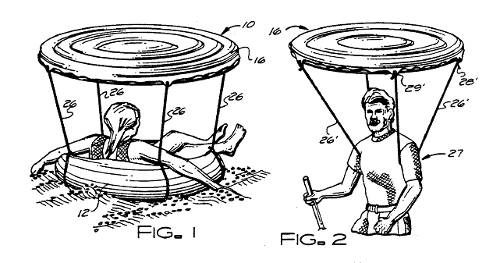
Patented in 1991, Frederick Sevilla’s helium-filled sun shade combines protection with effortless portability.
It must be tricky to manage, though — one slip and you’ll never see it again.

Patented in 1991, Frederick Sevilla’s helium-filled sun shade combines protection with effortless portability.
It must be tricky to manage, though — one slip and you’ll never see it again.
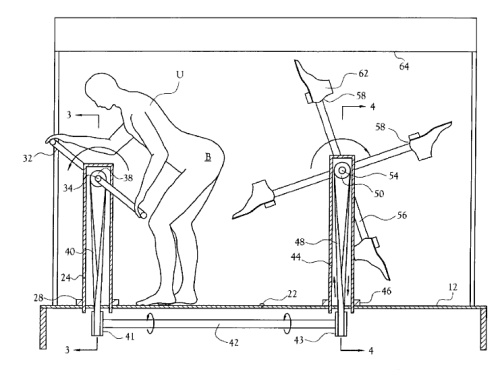
Joe Armstrong’s 2000 patent application is a model of clarity:
“The amusement apparatus is operated by one user for self-kicking the user’s buttocks, or an alternative embodiment allows one user to operate the crank while a second person positions himself to receive a paddling of his buttocks for entertainment of observers.”
He adds that an LCD can display kicks per minute, and the whole apparatus can be folded for storage. Kudos.
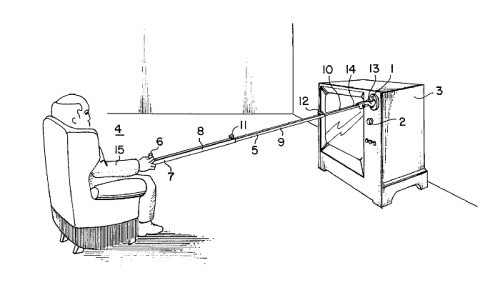
Broke and lazy? With Chris Michaels’ “TV control device,” patented in 1976, you can change the television channel from the comfort of your armchair — and it’s “considerably less expensive than its electrical and electronic counterparts.”
The trouble is that you’ll need to find a TV with knobs.
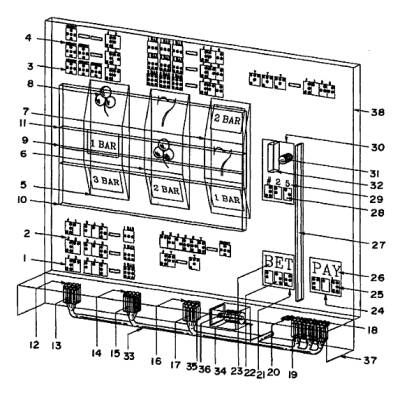
Edward B. Kaplan patented a unique idea in 1995: a braille slot machine.
A pad of pins corresponds to each reel in the machine; as the reels spin, the braille display changes under the player’s fingers until the winning combination is displayed. If the player wins, the machine vibrates slightly.
Any winnings are credited to the machine until the player presses a payout button. “This will also deter any theft from any other individuals.”
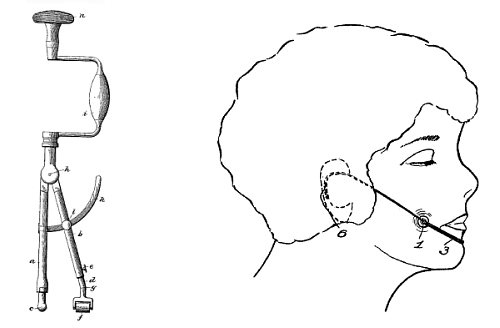
Martin Goetze’s 1896 “device for producing dimples,” left, was uncomfortably similar to a hand drill — an ivory knob was placed on the site and a rotating cylinder made the surrounding skin “malleable.”
Evangeline Gilbert’s improvement, right, patented in 1926, was essentially a headpiece that drove depressions into the cheeks. “The length of time on this pressure will vary with different persons, but it has been found that, if the appliance be used during the night, dimples will be present during the next day.”
Baltasar Gracian wrote, “Beauty and folly are generally companions.”
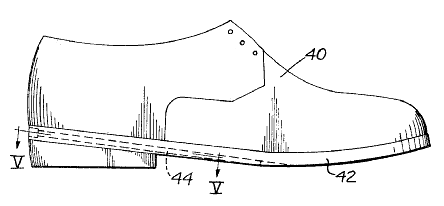
In 1971, Fred E. Stuart patented a “firearm mounted in a shoe heel.” He envisions military personnel and police using it when “regular weapons have been lost or become jammed.”
The shoes can fire regular bullets, frangible projectiles, or even tear gas, and can be fitted with multiple barrels that fire independently.
Combine this with a reversible sole and you have the makings of a perfect murder — a concealed weapon that confuses the crime scene.
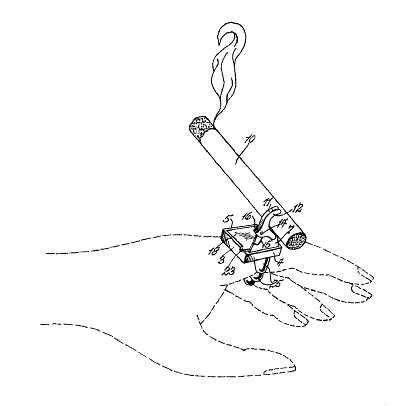
This should have caught on — Watson P. Aull’s “cigarette ring,” patented in 1938, clamps a cigarette in a ring worn on the left forefinger, so that the smoker has full use of her hands.
Here’s a related stunt from R.M. Abraham’s Diversions & Pastimes (1933):
“A cigarette may be lit quite easily by holding it 4 or 5 inches above the flame of the match.”
I haven’t tried it.
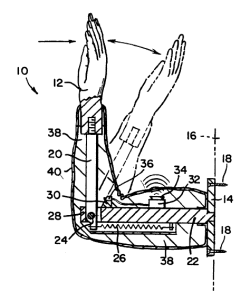
In 1994, inventor Albert Cohen saw a peculiar opportunity:
During a televised sporting event, a ‘high five’ is commonly shared between fans to express the joy and excitement of a touchdown, home run, game-winning basket, birdie or other positive occurrence. Unfortunately, as known in the art, a ‘high five’ requires the mutual hand slapping of two participants, wherein a first participant slaps an upraised hand against the elevated hand of a second participant. As such, a solitary fan is unable to perform a ‘high five’ to express excitement during a televised sporting event.
His “apparatus for simulating a high five” can be mounted on a table, wall, or floor — and it even promotes physical fitness: “When the hand-arm configuration is mounted at a sufficient height above the normal reach of a user, the user must jump upwards to strike the simulated hand, thereby simulating many of the jumping drills commonly practiced by basketball players. As such, the leg strength and coordination of a user may be improved through the practice of the present invention.”

In 1783, Benjamin Franklin watched a balloon carry a man into the sky over Paris.
“What good is a balloon?” scoffed a man in the crowd.
Franklin responded, “What good is a newborn baby?”
‘Overhead’ is a familiar technical term in newspaper work. It describes a report flashed to a newspaper directly by commercial telegraph instead of through the regular channels of a wire service. For instance: on Decoration Day in the town of Walsenburg, Colo., 50 mi. south of Pueblo, Editor John B. Kirkpatrick of the World & Independent wired Associated Press in Denver that he wanted coverage of the Indianapolis automobile races. Presently AP wired its reply: WILL OVERHEAD WINNER OF INDIANAPOLIS RACES. Editor Kirkpatrick jumped with excitement. An hour later the World & Independent’s 1,750 readers puzzled over an 8-column streamer:
OVERHEAD WINS INDIANAPOLIS RACE
The story, as edited by Editor Kirkpatrick, began:
INDIANAPOLIS, Ind. (AP) — Will Overhead won the Indianapolis Memorial Day race today. At the 250 mile post Babe Stapp was leading the string of roaring cars, but gave way to Overhead on the last half of the 500 mile grind.
— Time, June 12, 1933